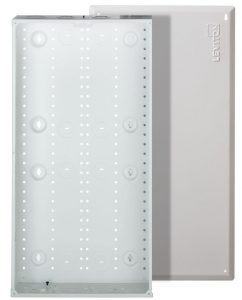As a builder, you know that building a house today is very different than it was 10 years ago. New tech like Low-E windows, spray-foam insulation, and numerous new building materials keeps you on your toes.
- 20 years ago, it was common to daisy-chain telephone wire from room to room.
- 10 years ago, it became common to run a dedicated line to a central low voltage box so the phone lines could be activated as needed. About this time, wifi and home broadband internet became widespread.
- 5 years ago, residential fiber-optic internet burst onto the scene and once again changed wiring needs. We now need to consider high speed internet delivery in the building process.
Before Construction
Contact Us to verify the fiber optic cable location along the street. Calling 811 to get locates done is also an important step. Utility cuts are costly repairs and 811 is free.
Our fiber generally runs near the underground electrical service. Sometimes this is not the case though. With a quick call, we can send you a map showing the location.
During Construction
Electrical service entrance:
- Our preferred method to get fiber to the house is through 3/4″ conduit. Often times, the builder includes a 3/4″ conduit in their trench from the electrical service entrance to the street near the transformer.
In-Home wiring considerations:
- Install a minimum of a 21″ tall structured wiring box. The 14″ boxes are too small for the plethora of equipment needed in a new house
Levitron 49605-28P seems to be a good fit.
- Run Cat 5e to each room in the house.
- Generally, it is a good idea to run RG-6 (coax) to each room’s TV location.
- Run Cat 5e to the same TV locations
- Media center locations (living room, den, offices) need more than 1 Cat 5e cable.
- Run Cat 5e for wireless access points.
- Today’s devices need WiFi access points closer together to achieve the best speeds.
- A WiFi access point can cover about 700-1000 sqft. We like to see 1 Cat 5e run to each area of the house that has significant usage.
- Generally one to the living room area, one to the living area, and one to an outdoor space if there is a large porch or other reason for people to gather in an area.
- Run a 3/4″ flex duct (smurf tube) to the external location. This external location is normally near the electrical service entrance.
- Put at least 2 Cat 5e cables in flex duct (internet and telephone).
- Put at least 2 RG-6 cables in flex duct for satellite TV (if needed).
- If you don’t want to run flex duct, running the Cat 5e and RG-6 through the wall will work.
- Ensure there is at least 2 feet of slack available after siding is completed.

